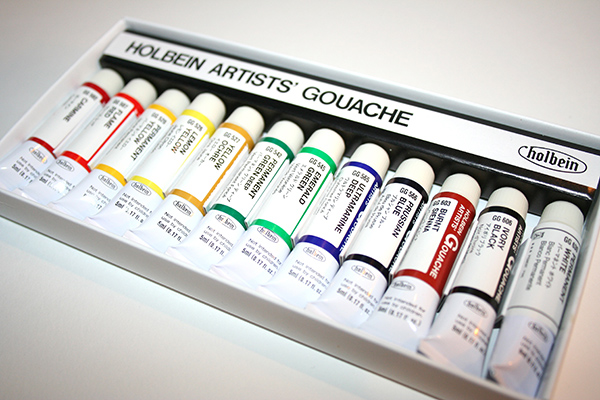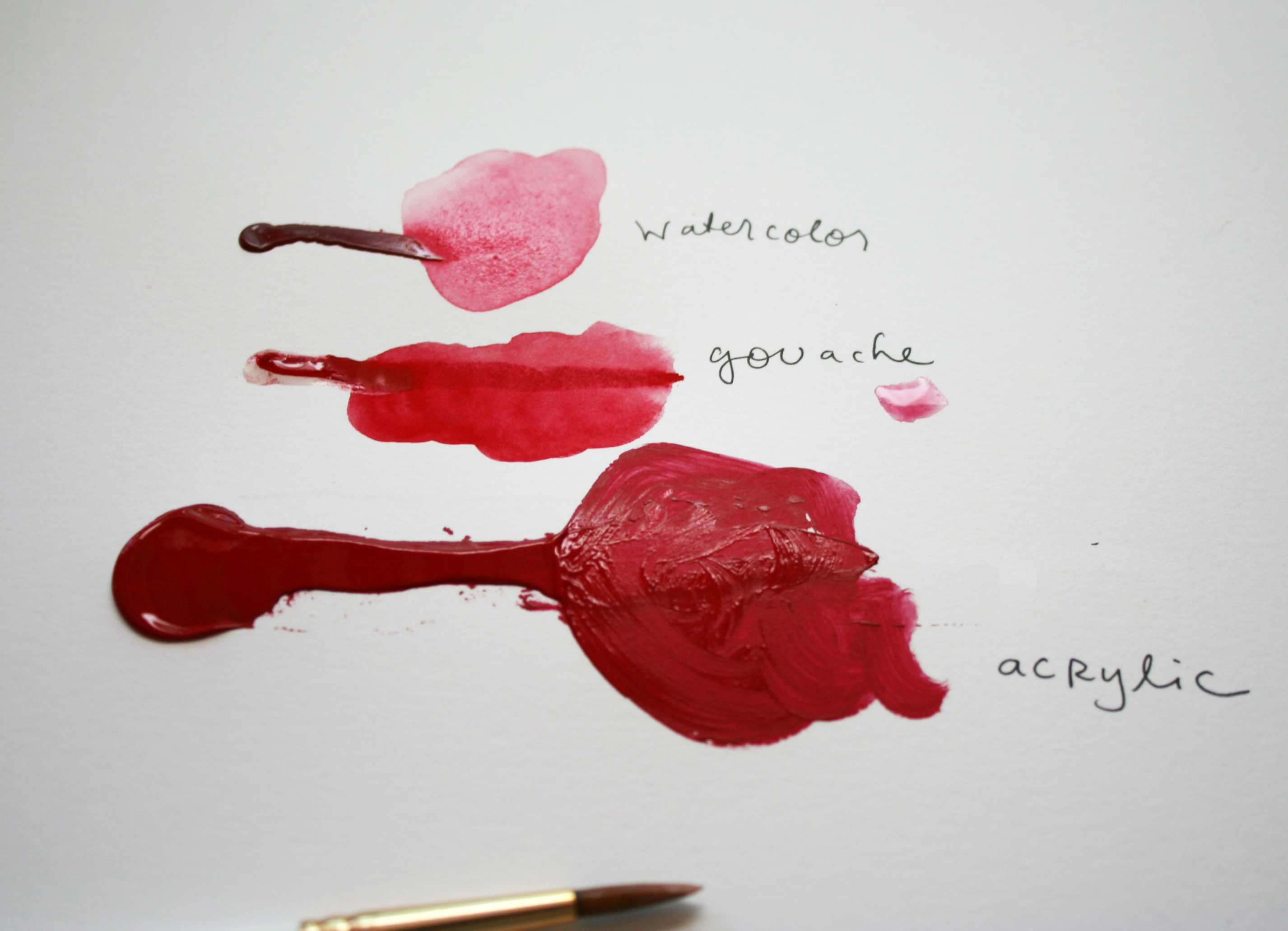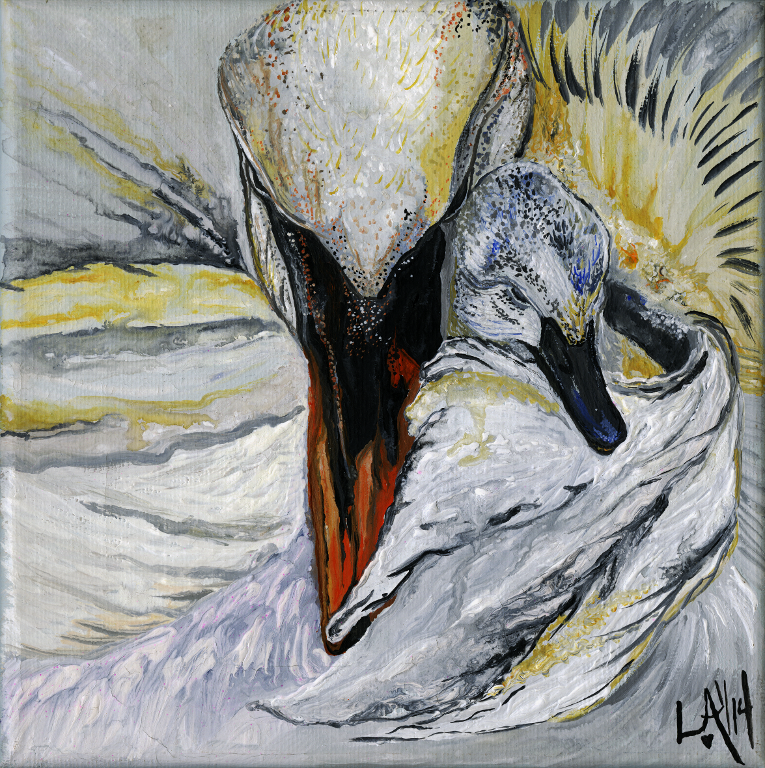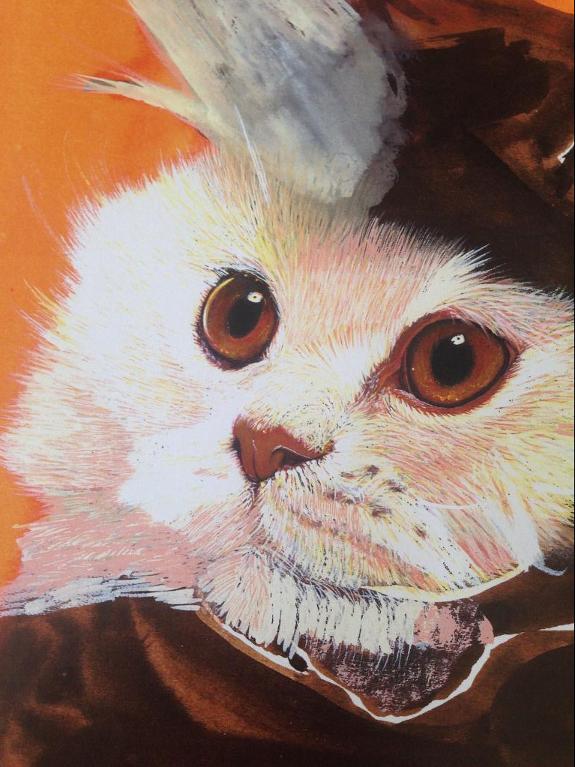What is gouache paint?

Gouache is a type of paint which is centuries old, and yet relatively few people even know of its existence today. It’s a medium worth discovering, with characteristics of both acrylic and watercolor that can be used to create vibrant, luminous works of art. In this post we’ll explore this unique medium, including not only an explanation of what it is, but also how to paint with gouache.
How do you pronounce gouache?
Gouache is pronounced “gwosh” … in your Frenchiest accent please.
What is gouache?
Note from the author: when I was in art school, a teacher referred to gouache as being “watercolor plus chalk.” That does oversimplify it a bit, but it gets the basic point across.
Sometimes referred to as opaque watercolor, gouache starts out similarly to watercolor. They are both composed of color pigment with a binding agent such as gum arabic. But that’s where things start to differ. First, the pigment ratio in gouache is usually much greater than in watercolor. Second, a solid white pigment such as chalk (or sometimes even acrylic) is often incorporated. These two factors give gouache a much heavier texture and higher opacity than watercolor alone.
In terms of working with gouache, this makes it a unique medium. It shows characteristics of both watercolor and acrylic, but is neither.

Consistency-wise, it’s most like watercolor, and comes in small, very concentrated portions. Like watercolor, it is commonly diluted with water before being applied to paper.
However, unlike watercolor (and more like acrylic), gouache is opaque in its natural state, and only becomes translucent when a larger amount of water is used to dilute the paint. This means that even with water added to the paint in the same quantity as watercolor, it will be far less translucent.

In addition, the added pigment gives it a texture which is not quite as delicate as watercolor, which is suitable for some types of canvas or coated surfaces.
Like acrylic paint, gouache will dry darker than the value painted on the paper or work surface, and it can be difficult to match mixed colors after the paint is dry.
As a side note, a type of paint that is commonly confused with gouache is poster paint. While poster paint shares a somewhat similar consistency, it is typically made with much cheaper materials, and should not be considered a substitute for gouache.
How can you use gouache?
It’s not watercolor, it’s not acrylic. So how do you use this magical gouache? Here are some inspiring examples of how gouache can be used to create gorgeous works of art.
Dog painted in gouache with pen detailing

Dog painted in gouache
Gouache is used to its full capacity in this painting, which features a watered-down gouache backdrop, but then takes advantage of the opacity of the medium to paint the dog on top. White detailing on the dog’s muzzle is lightly translucent, so it isn’t distracting, but is far more opaque than the effect you’d attain using white watercolor. The piece is finished with ink pen, which is easier to combine with gouache than acrylic given its flat finish.
Painterly swans

Swans via abbotinc4655136
As the above painting proves, gouache can be used in a highly painterly way, with more 3-D texture than watercolor paint. On the swans’ wings, yellow gouache has an almost watercolor-like effect, whereas the opacity of areas such as the bills could pass for acrylic. Versatile gouache is able to give both effects simply by adjusting the amount of water added to the paint.
Realistic cat painting

The opacity inherent to gouache allows you to attain sharp detail, such as the fine whiskers on this soulful kitten portrait. The ability to dilute gouache to a more transparent finish is utilized in the shaded areas on this painting, allowing several colors from cast light to be added to the painting in a subtle fashion. As a finishing medium, opaque white gouache adds a sparkle to the cat’s eyes that makes the painting that much more realistic.
Stylized cat painting

Home Sweet Home via Mornings with Coffee
Gouache can also be combined with watercolor to form graphic, striking images. The above image combines both media, employing watercolor washes for an interesting, varied color tone, but employs gouache for the elements on the surface, such as the white markings on the cat. The flat opacity of gouache makes an image such as this one well-suited for reproduction.
In your Frenchiest accent….made me smile, thanks! 😊
Nice one
Very interesting. Thank you
Does gouache paint stick to plastic & how likely is gouache to rub off when it's dry?
So, it rhymes with squash?
wanted to try something new and this looks exactly what i am thinking about. have trouble doing watercolor but can do acrylic and oil so going to give it a whir;.
thanks for great explanation and the examples! what is the best care for brushes used for gouache?
beautifully explained